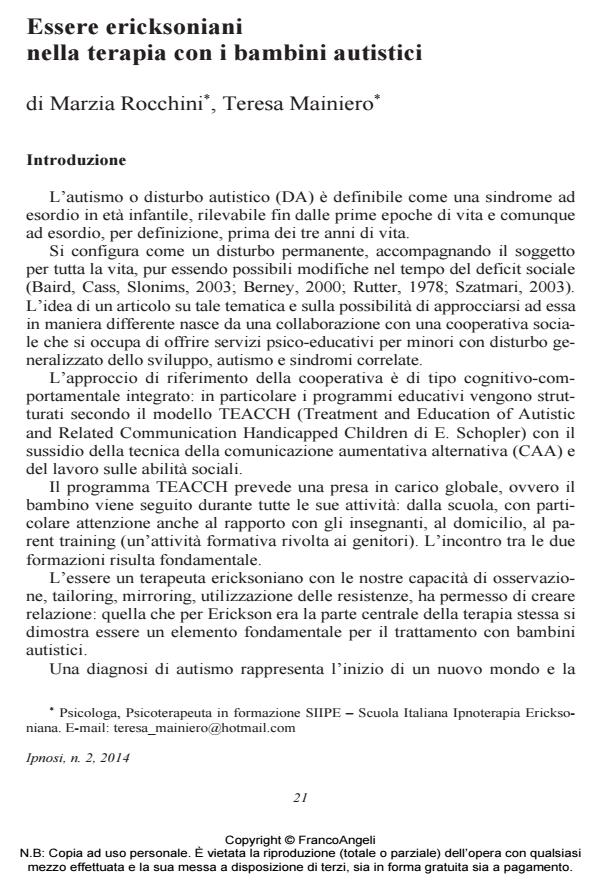Essere ericksoniani nella terapia con i bambini autistici
Titolo Rivista IPNOSI
Autori/Curatori Marzia Rocchini, Teresa Mainiero
Anno di pubblicazione 2014 Fascicolo 2014/2
Lingua Italiano Numero pagine 15 P. 21-35 Dimensione file 75 KB
DOI 10.3280/IPN2014-002002
Il DOI è il codice a barre della proprietà intellettuale: per saperne di più
clicca qui
Qui sotto puoi vedere in anteprima la prima pagina di questo articolo.
Se questo articolo ti interessa, lo puoi acquistare (e scaricare in formato pdf) seguendo le facili indicazioni per acquistare il download credit. Acquista Download Credits per scaricare questo Articolo in formato PDF

FrancoAngeli è membro della Publishers International Linking Association, Inc (PILA)associazione indipendente e non profit per facilitare (attraverso i servizi tecnologici implementati da CrossRef.org) l’accesso degli studiosi ai contenuti digitali nelle pubblicazioni professionali e scientifiche
Autism can be defined as a syndrome with onset in childhood. The symptoms that characterize it limit the child’s development in three areas: social relationships, communication, interests. In this article the authors aim at showing the effectiveness of a combination of the ericksonian and the cognitive-behavioral therapies in producing improvements in the relationships. The core of the ericksonian therapy turns - as far as autistic patients are concerned - into an admission key to a different way of communicating, thus allowing improvements in the relationship also with other figures of reference.
Parole chiave:Bambini, autismo, trattamento, relazione, terapia ericksoniana
Marzia Rocchini, Teresa Mainiero, Essere ericksoniani nella terapia con i bambini autistici in "IPNOSI" 2/2014, pp 21-35, DOI: 10.3280/IPN2014-002002